 Marvel’s All-New All-Different Red Wolf #1, out today, has faced more scrutiny than most books slated for the publisher’s line-wide relaunch. Written by Nathan Edmondson and drawn by Dalibor Talajic, the book was criticized upon announcement due to the titular character’s design as seen in an All-New All-Different promotional image. In addition, following Marvel’s announcement of Edmondson […]
Marvel’s All-New All-Different Red Wolf #1, out today, has faced more scrutiny than most books slated for the publisher’s line-wide relaunch. Written by Nathan Edmondson and drawn by Dalibor Talajic, the book was criticized upon announcement due to the titular character’s design as seen in an All-New All-Different promotional image. In addition, following Marvel’s announcement of Edmondson […]
Viewing: Blog Posts Tagged with: Nathan Edmondson, Most Recent at Top [Help]
Results 1 - 5 of 5
Blog: PW -The Beat (Login to Add to MyJacketFlap)
JacketFlap tags: #Marvel, All-New All-Different, Red Wolf, review, Reviews, Marvel, Nathan Edmondson, Top News, Dalibor Talajic, Add a tag
Blog: PW -The Beat (Login to Add to MyJacketFlap)
JacketFlap tags: Nathan Edmondson, Top News, Janelle Asselin, Tom Spurgeon, Controversy!, Red Wolf, loser city, nick hanover, Rich Johnston, Diversity, Marvel, Comics Media, Add a tag
When is a story not a story? When is the story about a story actually the story? Well strap yourselves in because you're about to find out!
Blog: PW -The Beat (Login to Add to MyJacketFlap)
JacketFlap tags: Nathan Edmondson, Top News, Dalibor Talajic, 1872, Secret Wars, All-New All-Different, Jeffrey Veregge, Red Wolf, Diversity, Marvel, Add a tag
Marvel already teased the fact that Native American character Red Wolf was on his way to get his own comic book, but today the first images and creative teams have been announced via Mashable. Nathan Edmondson (Black Widow) is writing the brand new series that features covers, design and consulting from Jeffrey Veregge, a Native American artist who recently contributed covers to G.I. Joe from IDW. Dalibor Talajić, recent artist from Secret Wars spin-off comic Master of Kung Fu is drawing the interiors. Jake Thomas will be editing the brand new series starting with Red Wolf #1 -- the first new solo title for the character in several decades. Red Wolf recently spun out of Marvel’s Secret Wars title 1872, an oddball tale that took place in the past. The hero was also in the All-New, All-Different Marvel teaser as seen below, which has allowed for fringe character in the Marvel Universe to remain relevant and receive their own quirky comic books. The series will take place in the American Southwest.
Blog: PW -The Beat (Login to Add to MyJacketFlap)
JacketFlap tags: Movies, Image, Breaking News, Showbiz, Mitch Gerads, Nathan Edmondson, Top News, The Activity, Add a tag
As reported by Latino Review, Nathan Edmondson and Mitch Gerads‘ The Activity is in the beginning stages of a getting a feature film script treatment by screenwriter Ken Nolan, most known for his work on Ridley Scott‘s Black Hawk Down.
Edmondson and Gerads are currently the team on the recent relaunch of The Punisher, which has been well received, and Edmondson’s Black Widow with Phil Noto has been one of my favorite surprise reads from the past year.
The Activity centers on a team of US special ops agents that fixes botched operations while wielding cutting edge tech. It’s currently up to Issue 16 from Image.
Nolan was apparently such a big fan of the series that he penned the intro to the Vol 3 trade-paperback collection that saw release last month.
The property isn’t currently attached to a studio, so its got a bit of a road ahead of it in order to line up producers and studio interest, but this is exciting news for fans of the team.
Blog: PW -The Beat (Login to Add to MyJacketFlap)
JacketFlap tags: Top News, alison sampson, Interviews, Art, Process, Image, Image Comics, Nathan Edmondson, Add a tag
Out this April comes a one-shot from Image Comics by the creative team of Nathan Edmondson, Alison Sampson and Jason Wordie. Called Genesis, this is a story is all about imagination and creation, and restriction, and limits. When given unfettered ability to shape and create the world in your own imagination, how far would you go and what would you do? And what if it all goes wrong?
Genesis spins wheels within wheels, and forms a tricky, unexpected and startling story as a result. Ahead of the release of the issue this April, I took the chance to talk to Sampson and Edmondson about, well, the genesis of their project. How did they plan the story together, and what can readers expect from the issue? Read on to get a look into their creative process, as well as at Sampson’s art from the issue.
This interview starts and ends with the pair together, but spins off so we first talk to Edmondson, and then to Sampson. I think it makes for a more interesting read than if everybody answers the same questions each time.
Steve: What is the general premise of Genesis? What is the story about?
Nathan: A preacher who wants to make a difference in the world finds himself with the ability to change everything about the world, but his will, he tragically learns, is not strong enough to protect the world from himself.
Alison: Genesis is the story of a man who finds he can create anything, and what happens next.
Steve: A lot of the story hinges on your main character’s imagination, and his ability to think and build and create – was it difficult to find an artist whom you trusted to visualise the imagery of the issue?
Nathan: I looked around a bit and talked to a few illustrators but the fire wasn’t really lit until I saw Alison’s work and realized what she could bring to the story with her background in architecture. The story is different and radical and trippy and I wanted someone who could bring something equally as mind-bending to the illustration.
Steve: What about Alison’s work led you to pitch this project to her? What made her the right fit for Genesis, in your opinion?
Nathan: Much of the book deals with building the world and then twisting it–sometimes very literally. Alison, as an architect, understands how the pieces of the world fit together and thus how they can be warped and torn apart — I thought that approach would add a level of believability and even horror to the story that would help anchor the reader through the LSD trip that follows after the opening pages.
Steve: How did you build up the story together? What was the collaborative process like?
Nathan: As is typically the case with my collaborators, I’m happy to have the artist just run with the script and play jazz and make something of it true to their own vision; Alison especially had in mind a specific layout and design approach on the pages which I could never have described in a script.
Steve: The narrative is essentially a stream of consciousness, I would say – it feels like, rather than having a strict start and end, you set up a premise and then followed it across whichever twists and turns came up. Was that the intention?
Nathan: In a sense; there is a three act structure here, but I’m happy in this story to leave certain questions asked but not directly answered, so that in a way the story beats will echo after the end of the book and the reader will be left to consider them.
Steve: You’ve written elements of fantasy before, but this feels like a different style of storytelling from you, from anything we’ve seen in your comics before. Do you think this might be the stepping stone for more experimental-styled work as you continue on in comics?
Nathan: My interests are diverse; there are lots of different sorts of stories to tell and while I’ve centered in a way around my spy-fi and military worlds recently, building and expanding that fan-base, it’s a thrill (and a welcome change of pace and headspace) to explore wild and new story universes. I’ve got a lot of things coming, in many different genres. I just hope my readers are as adventurous as I am.
Steve: Was there ever a temptation to stretch out the story and tell this as a miniseries rather than a one-shot? What was it about the one-and-done format which most appealed to you?
Nathan: At some point I had outlined it that way, yes. Eventually the story revealed itself at this length, and that was the right way to go with it.
Steve: Alison, what attracted you to the project?
Alison: Nathan asked me to be part of this project, at the point where my architecture contract was just coming to an end. I’d done that for a long time, so to take on a new challenge seemed like a good idea. At the time, I’d just drawn one comic and had just started to write and draw another. I really missed designing by drawing.
It seemed like a good idea for someone of my level of comics experience to work with a writer, so my art would be challenged. I wouldn’t only draw what I could draw – I might have to draw anything, which turned out to be exactly the case. The ideas themselves seemed highly attractive – the kind of thing you’d find in Ovid’s Metamorphoses – and fun.
Steve: Do you have a particular approach to storytelling, do you think? As well as making comics, you’re also an architect – which I think is reflected in the comic, both in the central story and in your artistic style.
Alison: I don’t know. What I draw comes from responding to the script and my trying to make something comprehensible, with enough space, on the page. I take an engineering approach. “it is what it needs to be”. It needs to look nice, of course. That’s the unwritten secret of architecture. And just because I respond to the script, doesn’t mean it is lengthy- this one, as far as I know, was quite concise. I try and work off the dialogue and make an interesting looking, telling page.
Steve: Who are your influences as an artist? In an interview with Jason Sacks, you brought up Emma Rios – which was the comparison I would have made myself.
Alison: My architecture work is what influences my work as an artist, and the work of painters like Robert Rauschenberg and narrative photographers, like Jeff Wall, and many others. I’ve come late to comics as a reader and I was drawing before that, so it’s probably fair to say it has not come from comics. I judge the art on the page like I’d judge anything else aesthetically, and if it doesn’t look OK, I alter it.
There is a lot of art I like, including Emma, and Nate Powell, Brandon Graham and Jock; but I’m not going to say it is an influence. Catalyst might be a better word. As influencing goes, I look to certain comic artists and writers for how they handle themselves and a sense of principles. Drawing isn’t the only part of making comics.
Steve: The central character, Adam, is by design a fairly ordinary man, somebody you wouldn’t expect to have something like this happen to him. How did you approach designing him?
Alison: I wanted him to have a simple graphic look that would be strong in black and white, and before we started the comic, I drew some sketches: white hair and a decent black suit, but a good looking man. Slightly offbeam, like this was a special person, but living in the world- and it would lead to a solid page structuring graphic. Then, when he comes out of hospital, in the script, he was in a blue shirt and not the suit- it was the only piece of colour or clothing description in the whole script, and he never put the jacket on again. So that was that.
The book is very much about what is inside him (with his external appearance being a foil for that), so this is fair enough. What is inside him isn’t ordinary, or maybe it is. You choose.
Steve: What’s your storyboarding process like? How do you decide when to use a more, I suppose, formal structure, and when to start changing the shape and composition of the panels?
Alison: I look at the script and break it down by drawing a small thumbnail, and that’s it. The script doesn’t tell me to do this, it’s just what I think gets things on the page in the right way. I couldn’t apply an over-riding concept without risk, even if I had wanted to- I did not have the whole script for more than a year. I don’t think any reader would be second guessing where Nathan would take the story, and it was the same for me.
Steve: Do you ink your own work? What do you look to emphasise when inking over your pages?
Alison: Yes. I try and bring the page to life as much as I can. Sometimes that is a much about taking ink off as putting it on.
Steve: How did the collaborative process roll out for the story?
Alison: Nathan told me about his idea and asked me to do some sketches. The story was in San Francisco, it was about this man. He could distort the world, and make things- anything. I did some sketches, and it is pretty difficult when you subject is anything. So I had to do research and sketches for my sketches. How do you ground this power, and give it meaning? I also sent some visual references, like this.
When I’d drawn the fourth drawing (they weren’t really sketches), then Nathan let me have the eighteen pages of script and we never talked about the art again until it came to fixing that it was Jason coming on board to colour. Nathan trusted me to get on with it and I took on an unfolding story. I was given space to do what I do, and I trusted in Nathan’s skills to provide a viable script- that is collaboration.
Steve: Do you consciously try to find motifs of your own – unmentioned in the script – to add to the story?
Alison: Yes, all the time. That’s part, or maybe most, of my job. There is a long way between a brief script and a fully executed comic.
Steve: Later in the story, things get more abstract and wild. Which sections of the story did you work on first? Did you create the mad, surreal landscapes of the latter half of the comic first, and then contrast it to this relatively more formal and intimate opening; or the other way round?
Alison: I worked on the pages consecutively, largely, as that was how I had the script, but `I tried to have an overview on the geography of the whole thing, if that makes sense.
Steve: Thank you both for your time! What else do you both have coming up? Where can people find you online?
Alison: I have more comics coming up. I curate and manage Think of a City. A week after Genesis comes out, there is a story I drew for In the Dark, Rachel Deering and IDW’s massive horror anthology. Shadows, written by Matthew Dow Smith. Mainly, though, I have a specific project that should be announced soon.
The best place to find me is on my portfolio tumblr or on Twitter here.
Nathan: I can be found on twitter here - and also here. Upcoming, beside wrapping THE ACTIVITY and WHERE IS JAKE ELLIS?, continuing BLACK WIDOW and THE PUNISHER, I have a few creator owned works — but all of that in good time…



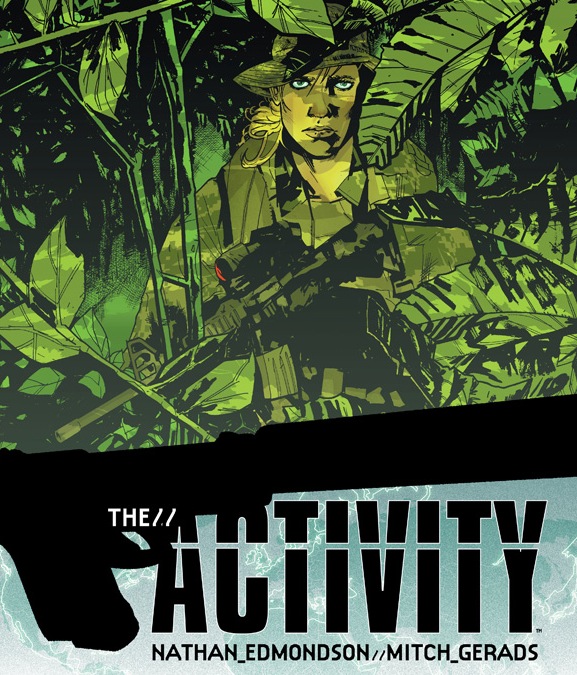

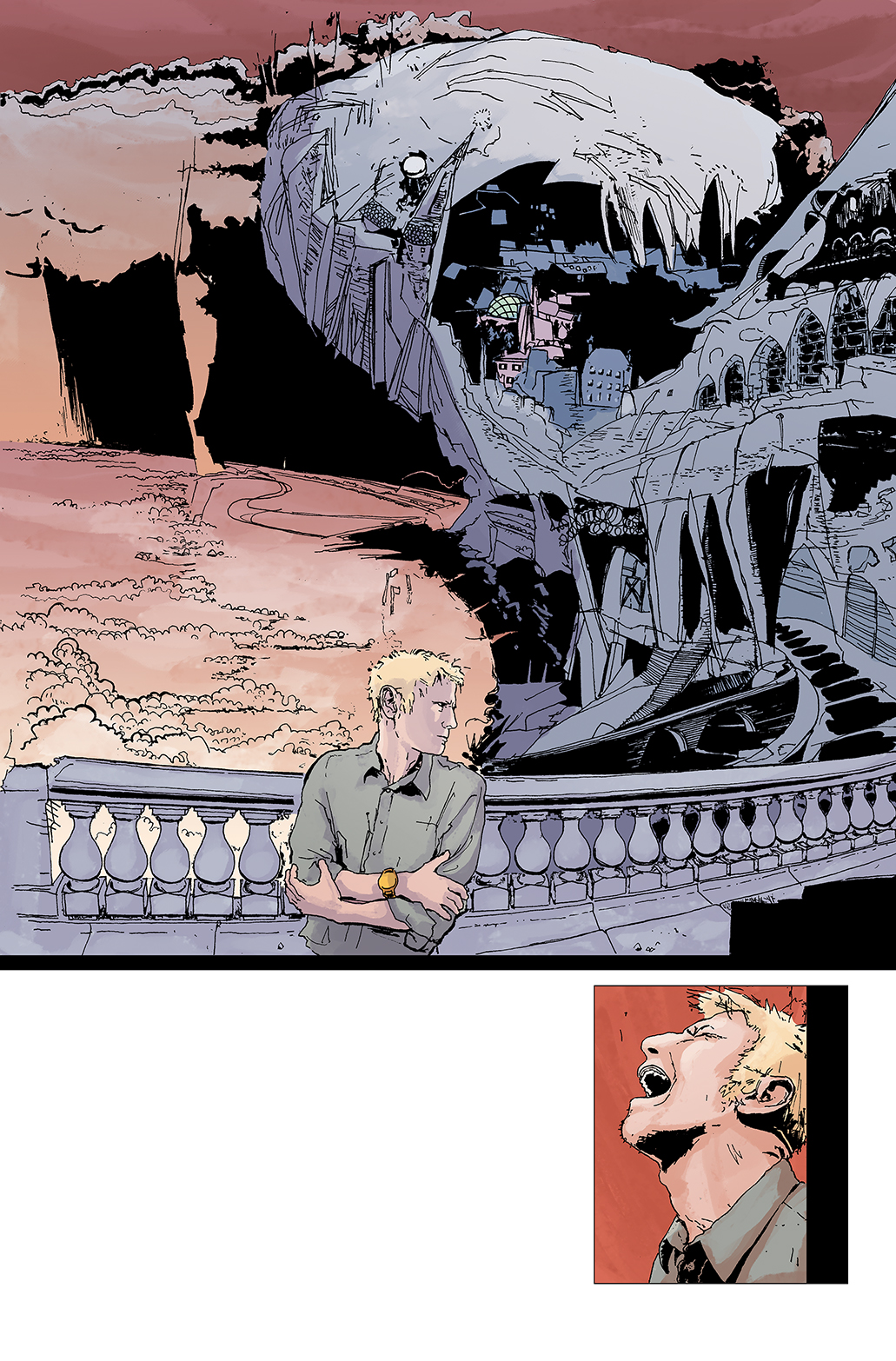
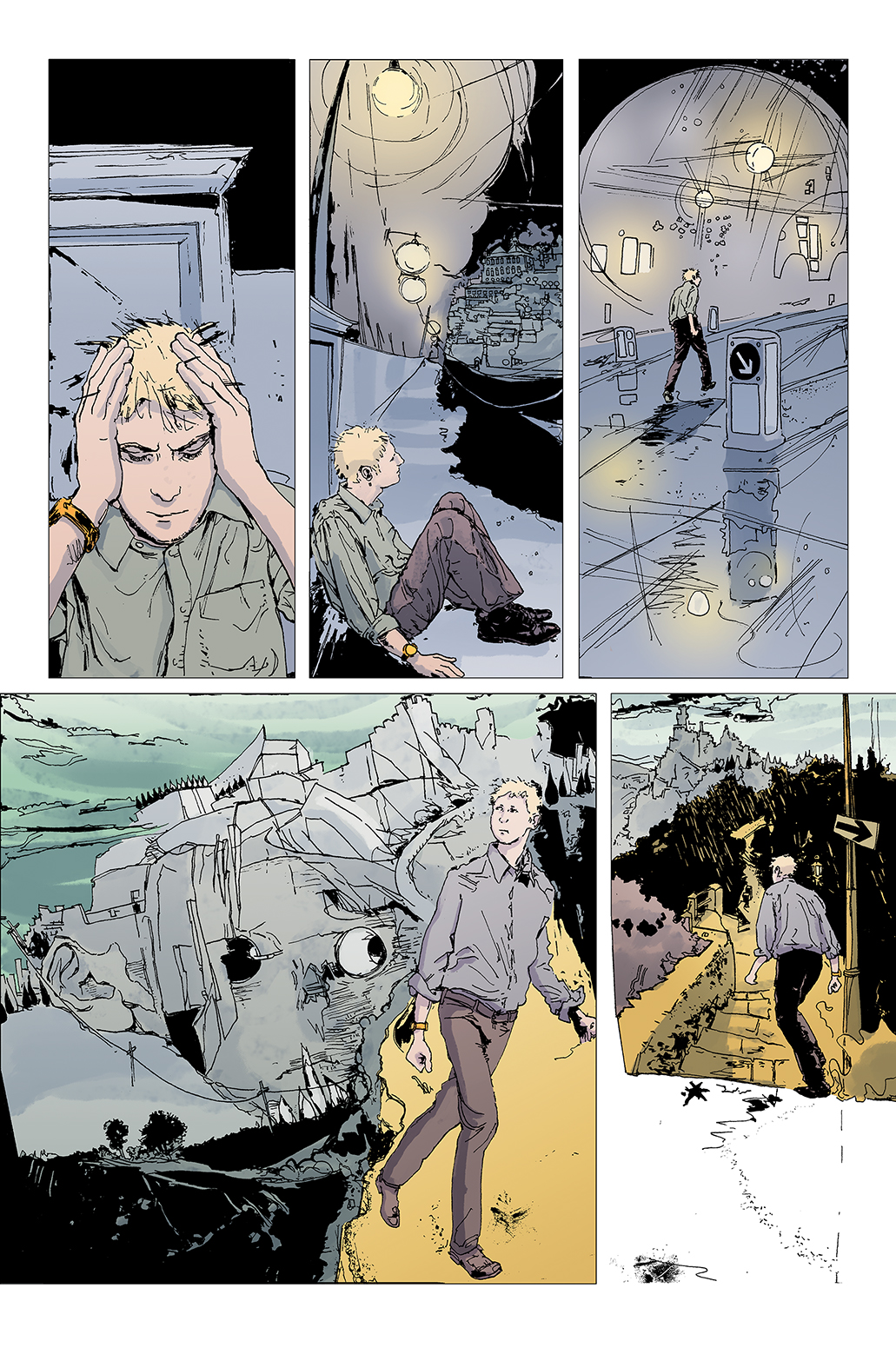
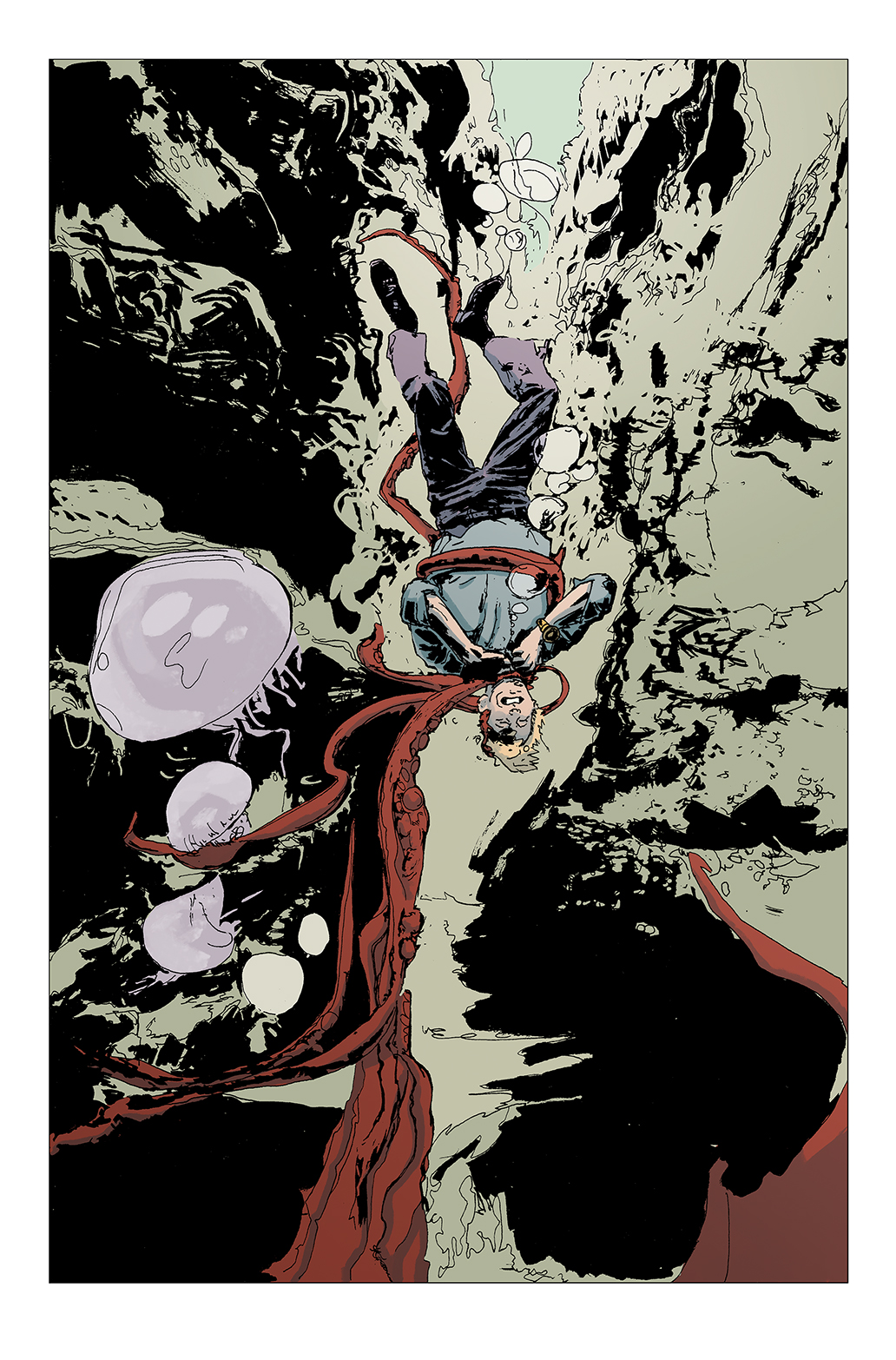
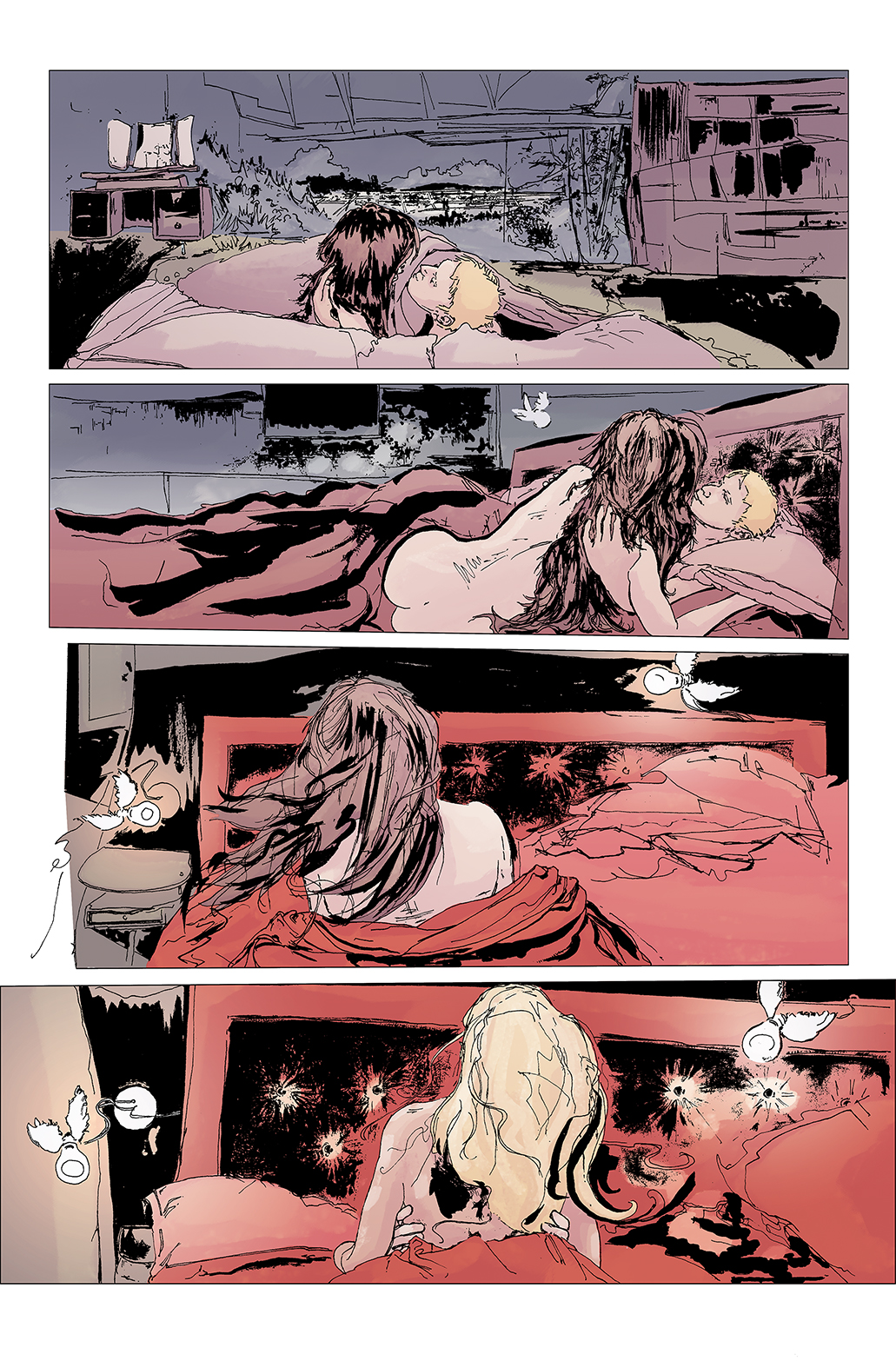
B…but… CBR gave it 4.5 out of 5 stars! Now I don’t know what to believe!!!
The 2 “Last Days” issues of “Punisher make Dick Cheney look like a liberal. It was full-blown neocon bomb-all-the-savages b.s. The irony is that Edmonson is a huge war-loving neocon who for some reason hasn’t been willing to demonstrate his claimed patriotism by enlisting in the military. I guess like most neocon’s his age, Nathan has been backed up on personal chores this past decade. He’ll get to proving his warrior nature after he is done cleaning his DVR of backed up episodes of “Real Housewives.”
He’s a piece of shit writer, as well. Not just a cowardly armchair General, but a shitty writer!
[…] The Beat – Red Wolf #1 […]
Yeah! He needs to realize he isn’t allowed to not be liberal!
And Magic Wind is unreviewed and unloved by all…